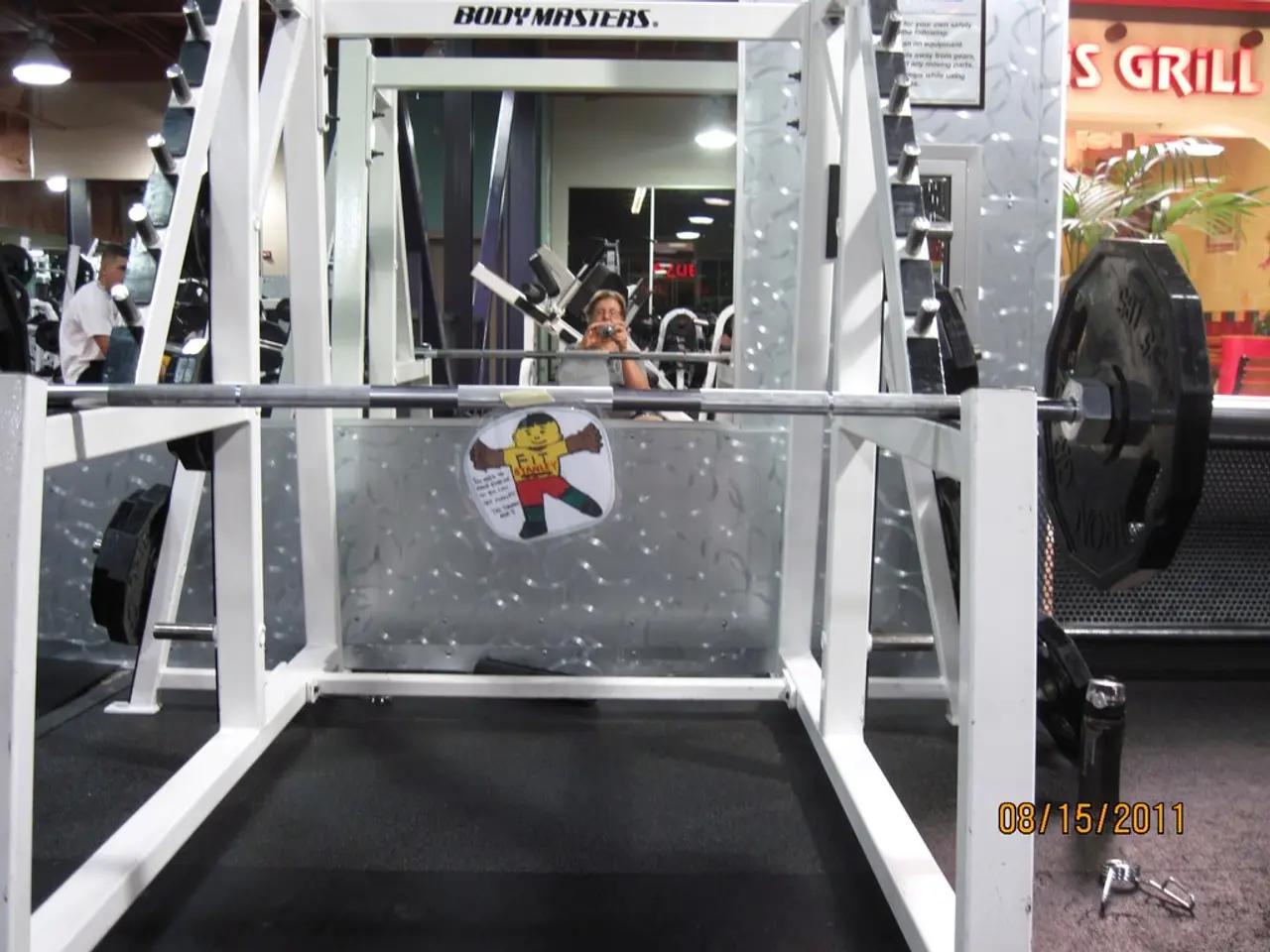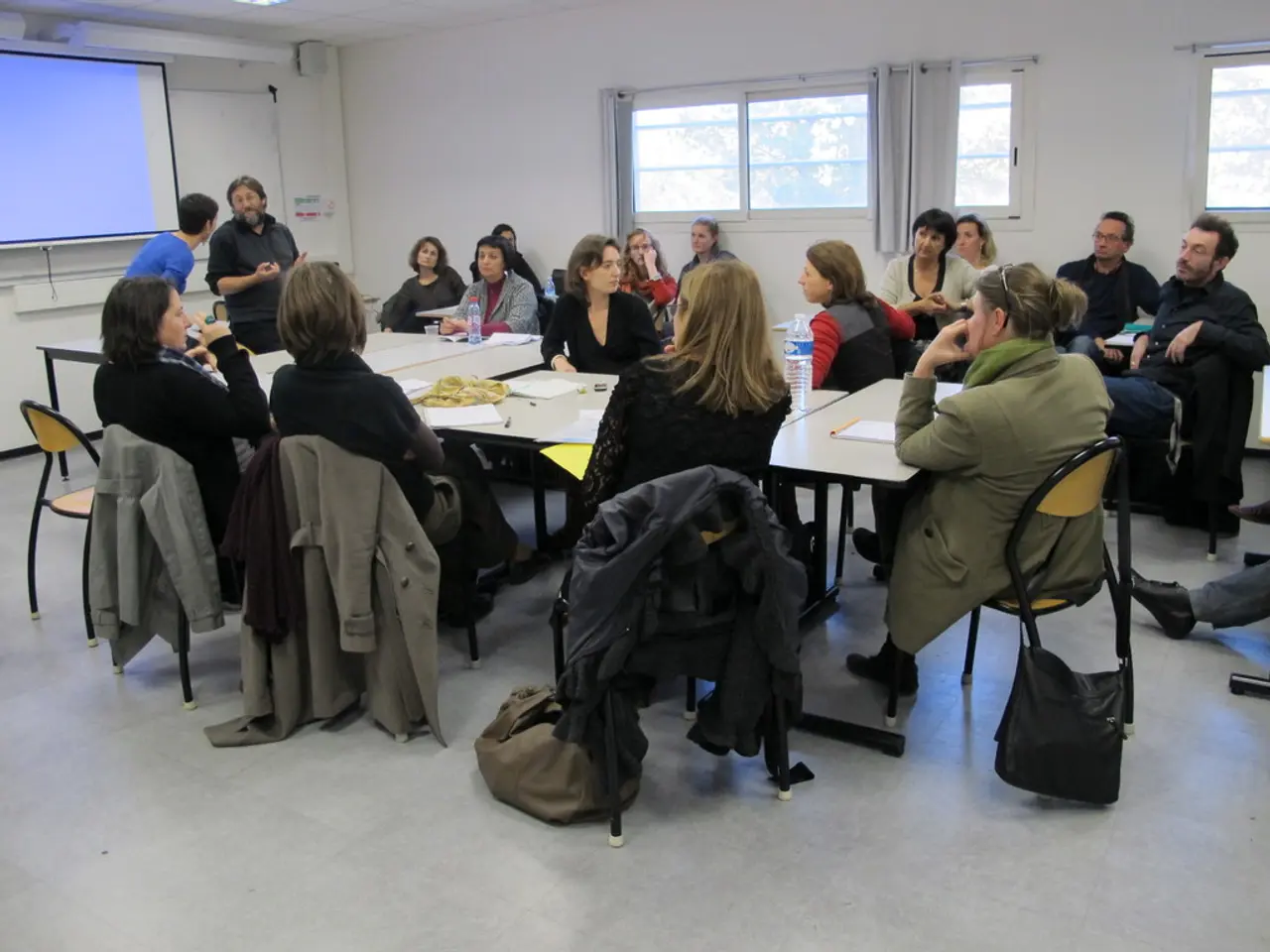Home Fitness Test Gaining Popularity Allegedly Forecasts Lifespan, Yet Hidden Constraints Exist
The Sitting-Rising Test (SRT) is a straightforward and low-tech method for predicting longevity, outperforming other methods such as blood tests, scans, and fitness trackers. This test, which is easy to perform at home, provides a quick assessment of a person's physical fitness.
The test involves sitting on the floor cross-legged and then rising to a standing position. Each action starts with 5 points, making a total of 10. Points are deducted for using hands, forearms, or knees for support, showing unsteadiness, or any other signs of balance issues. A perfect score of 10 indicates that the person performed the test without any support or balance issues.
The SRT stands out as a reliable longevity indicator because it assesses non-aerobic fitness components such as muscle strength, flexibility, balance, agility, core, and leg strength. These factors contribute critically to overall mobility and decline prevention with aging, which are linked to survival and lower risks of death.
Performance on the SRT depends on factors such as muscle strength in legs and core, flexibility for smooth movement during sitting and rising, balance and stability to avoid wobbling or falls, joint health and mobility, especially in knees and hips, and cardiovascular and overall physical fitness.
The SRT is praised for being safe, quick, accessible, and easy to understand, making it a practical screening tool for assessing health and longevity risk in adults aged 51 to 80 and beyond. Experts recommend training balance, flexibility, and strength to improve SRT scores and potentially lower mortality risk.
While the SRT only looks at lower-body function and core strength, it is still an important tool for older individuals as it assesses their strength, balance, and range of motion, which are crucial for daily living and fall prevention. However, some factors that don't necessarily affect longevity can cause difficulty in the SRT, such as joint pain, injury, or overexertion.
The SRT was developed by Claudio Gil S Araujo, MD, a sports and exercise physician from the Exercise Medicine Clinic Clinimex in Rio de Janeiro. A 2015 study found that grip strength was better at predicting someone's odds of dying from heart disease or other causes during the follow-up than systolic blood pressure. The test has been found to be particularly accurate in middle-aged and older adults, with participants who scored a perfect 10 on the test having a lower death rate during a follow-up period of about 12 years compared to those who scored lower.
- Maintaining a healthy lifestyle, including regular exercise, fitness, and a balanced diet, can improve one's SRT score and potentially lower their mortality risk.
- Science continues to highlight the importance of non-aerobic fitness components, such as muscle strength, flexibility, and balance, in promoting a healthy lifestyle and reducing the risk of aging-related decline.
- News regarding health-and-wellness often emphasizes the significance of the Sitting-Rising Test (SRT) in predicting longevity, outperforming other methods like blood tests, scans, and fitness trackers.
- By incorporating exercises that improve balance, flexibility, and strength, one can enhance their performance on the SRT and contribute to their overall fitness-and-exercise routine.
- Nutrition plays a crucial role in supporting joint health, mobility, and cardiovascular fitness, which are all essential factors in achieving a perfect score on the SRT.
- The SRT, a simple test that assesses lower-body function and core strength, serves as a practical tool for older individuals, providing insights into their strength, balance, and range of motion, essential for daily living and fall prevention.
- The development of the SRT by Claudio Gil S Araujo, MD, has transformed the understanding of longevity prediction, underscoring the importance of balancing aerobic and non-aerobic fitness components for a healthy lifestyle.




